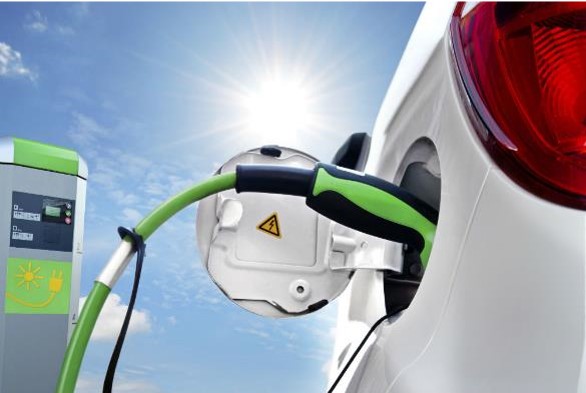
Plug-in electric vehicles (also known as electric cars or EVs) are connected, fun, and practical. They can reduce emissions and can even save you money. In the UAE, EV vehicles enjoy a range of benefits!
Interesting GCC-wide research (2020) of EV buyers’ perceptions: click here for the report
Fueling with electricity offers some advantages not available in conventional internal combustion engine vehicles. Because electric motors react quickly, EVs are very responsive and have very good torque. EVs are often more digitally connected than conventional vehicles, with many EV charging stations providing the option to control charging from a smartphone app.
Just like a smartphone, you can plug in your EV when you get home and have it ready for you to use the next morning. Since the electric grid is available almost anywhere, there are a variety of options for charging: at home, at work or on the road.
But EVs provide more than just individual benefits. EVs can help a greater diversity of fuel choices available for transportation. EVs can also reduce the emissions that contribute to climate change and smog, improving public health and reducing ecological damage. Charging your EV on renewable energy such as solar or wind minimizes these emissions even more. See the difference in emissions between a conventional vehicle and an EV using the calculator on the right. Learn more about how EVs reduce pollution and their lifecycle emissions.
Maintenance needs and safety requirements for hybrid electric vehicles (HEVs) and plug-in hybrid electric vehicles (PHEVs) are similar to those of conventional vehicles, while all-electric vehicles (EVs) require less maintenance. Manufacturers are designing these vehicles and publishing guides with maintenance and safety in mind.
Maintenance Comparison: Because HEVs and PHEVs have internal combustion engines, maintenance requirements are similar to those of conventional vehicles. The electrical system (battery, motor, and associated electronics) will likely require minimal scheduled maintenance. Due to the effects of regenerative braking, brake systems on these vehicles typically last longer than those on conventional vehicles. EVs typically require less maintenance than conventional vehicles because:
- The battery, motor, and associated electronics require little to no regular maintenance
- There are fewer fluids to change
- Brake wear is significantly reduced due to regenerative braking
- There are far fewer moving parts relative to a conventional gasoline engine.
Battery Maintenance: The batteries in electric-drive vehicles are generally designed to last for the expected lifetime of the vehicle. Several manufacturers offer 8-year/100,000 mile warranties for their EV and PHEV batteries.
Safety Requirements: HEVs, PHEVs, and EVs have high-voltage electrical systems that typically range from 100 to 600 volts. Their battery packs are encased in sealed shells and meet testing standards that subject batteries to conditions such as overcharge, vibration, extreme temperatures, short circuit, humidity, fire, collision, and water immersion. Manufacturers design these vehicles with insulated high-voltage lines and safety features that deactivate the electrical system when they detect a collision or short circuit. EVs tend to have a lower center of gravity than conventional vehicles, making them more stable and less likely to roll over.
Emergency response for electric drive vehicles is not significantly different from conventional vehicles. Electric drive vehicles are designed with cutoff switches to isolate the battery and disable the electric system, and all high-voltage power lines are clearly designated by being colored orange. Manufacturers publish emergency response guides for their vehicles and offer training for emergency staff.
UAE’s emergency response forces get special training on how to deal with fires of electric vehicles: https://www.moi.gov.ae/en/media.center/news/4054757.aspx
Road Safety and the Silence of EV’s, HEVs, PHEVs: Most hybrid and electric vehicles emit a low hiss as they glide down the street. Car companies already give this a lot of thought. Some countries developed safety standard requiring that new electric vehicles emit an audible sound when traveling at less than 30km/h. Cars zipping along faster than that, regulators say, produce enough tire and wind noise to let people know they’re coming. The subtext of the rule is that silence is dangerous. One study found that pedestrian accidents are 37% likely in electric vehicles than conventional cars. Some feature warning sounds to alert pedestrians to their presence, like vehicles sounds like a rusty, creaking door or they emit incessant digital beeps or a harmonic low hum that increases when they gets too close to an object or person. For the UAE, no such guidelines have been announced.
Sources: https://www.afdc.energy.gov/vehicles/electric_maintenance.html; https://energy.gov/eere/electricvehicles/electric-vehicle-benefits; https://www.wired.com/2017/04/evs-dangerously-quiet-heres-sound-like/; http://gulfnews.com/news/uae/transport/electric-cars-in-dubai-come-with-these-four-free-perks 1.2095098; https://www.moi.gov.ae/en/









